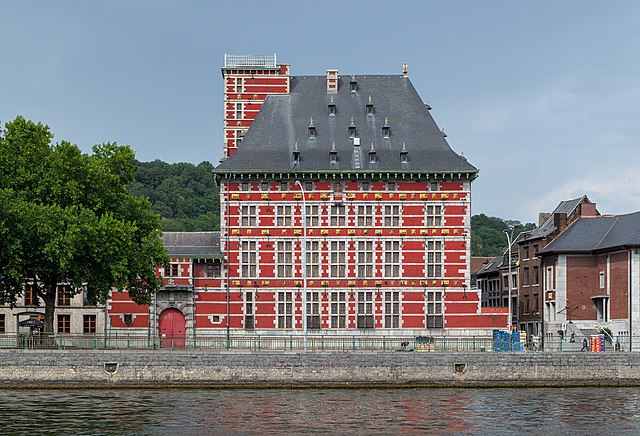Top Qs
Timeline
Chat
Perspective
Curtius Museum
Museum of archaeology and decorative arts in Liège, Belgium From Wikipedia, the free encyclopedia
Remove ads
The Curtius Museum (French: Musée Curtius) is a museum of archaeology and decorative arts located on the bank of the river Meuse in Liège, Belgium. It is classified as a Major Heritage of Wallonia.

It was built sometime between 1597 and 1610 as a private mansion for Jean Curtius, industrialist and munitions supplier to the Spanish army. With its alternating layers of red brick and natural stone and its cross-mullioned windows, it typifies the regional style known as Mosan Renaissance architecture.[1]
After a €50 million redevelopment, the museum reopened as the Grand Curtius (Le Grand Curtius) in March 2009, SND now houses the merged collections of four former museums: the Museum of Archeology, the Museum of Weaponry, the Museum of Decorative Arts, and the Arteum of Religious Art and Mosan art.[2] Its highlights include treasures of Mosan art such as a 12th-century gilded reliquary triptych, formerly in the church of Sainte-Croix;the Evangelarium of Notger; sculptures by Jean Del Cour; and a portrait of Napoleon Bonaparte painted by Ingres in 1804: Bonaparte, First Consul.

Remove ads
See also
- Liège–Aachen Baroque furniture
- Baroque in Prince-Bishopric of Liège
- Ansembourg Museum in Liège, Belgium
- Couven Museum in Aachen, Germany
- Museum aan het Vrijthof in Maastricht, Netherlands
- Koninklijke Musea voor Kunst en Geschiedenis (KMKG) in Brussels, Belgium
References
External links
Wikiwand - on
Seamless Wikipedia browsing. On steroids.
Remove ads
